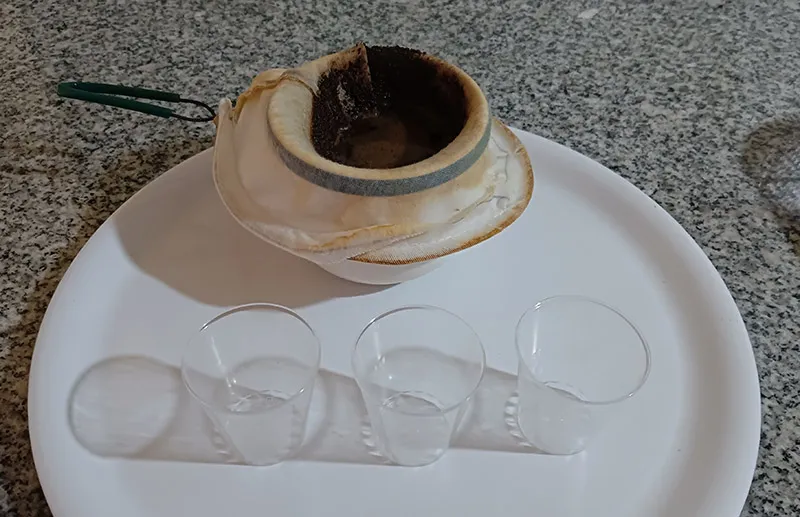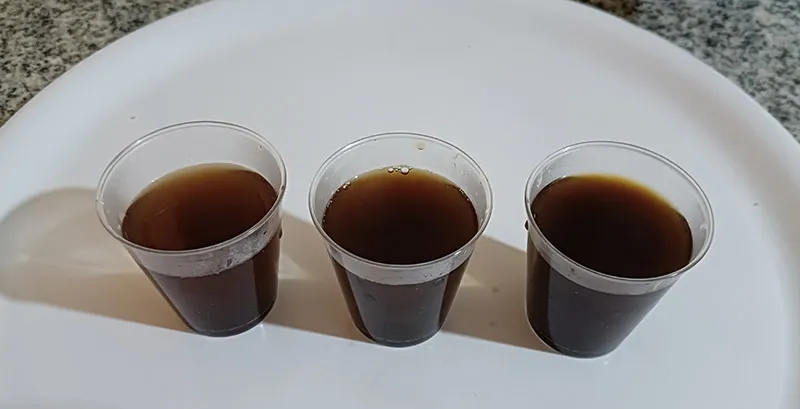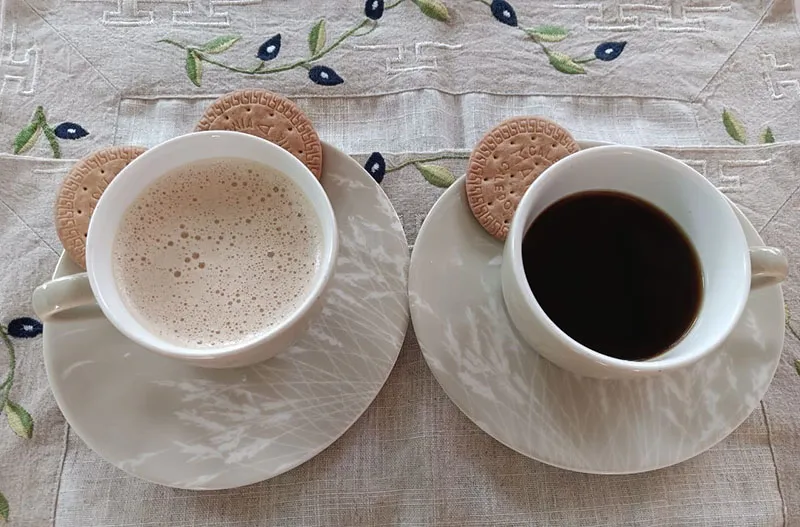
A little over a month ago, I wrote a post titled Passion for coffee. In it, I made reference to the names that Venezuelans give to prepared coffee, taking as a criterion the coffee-water ratio in its preparation, from higher to lower according to the amount of coffee used, we distinguish between: guarapo, guayoyo and negrito, (small black).
It should be noted that guarapo and guayoyo can enter into a special category that we call recolored. The recolado consists of adding more boiling water to the grounds that have been left in the brewing sleeve, which is the most traditional way we have of making coffee.


Personally I do not like the brewer, I have it because once when I went on a trip my husband bought it to make his afternoon coffee, he did not like the brewed coffee either and ended up buying a small two-cup brewer, not very functional for me.
I believe that the most popular way to drink coffee in Venezuela is the negrito (small black), I say this because if you go out in the street early or in the middle of the afternoon it is common to find street vendors offering you this small, medium strong and consistent coffee. There was a time, not too long ago, when there was a shortage of coffee and sugar and even at traffic lights you could find someone selling you the precious beverage.
Nowadays, the supply of coffee has returned to normal, so that the street vendors of prepared coffee are hardly seen on the street, they are concentrated more where there is a large volume of people such as bus terminals or gas stations when this product is scarce and long lines are formed. The truth is that in the morning hours, this is our favorite drink.

Today's topic is dedicated to a very popular combination at regional and world level: coffee and milk, where we find several presentations. When you go to a coffee shop it is common to hear a terminology that defines each type in a very concrete way, then we have, for example, a coffee with milk, a cup of tea, or a light brown. Let's see the particularity of each one.
*Coffee with milk. It is more milk than coffee, so you can still find the soft bitterness of coffee. Within our customs it is customary to ask for it to accompany breakfast.
*Teapot. This one loses its coffee essence. If the coffee with milk has about twenty percent of coffee, the teapot will have about ten percent or less, the truth is that it has never provoked me to try it, I have a sister who drinks it this way and says it is very tasty, as they say, between tastes and colors...
Then follow the saga of the browns, among them:

*A brown: it is half milk and half coffee. The Spanish call it cut, and for my taste it is very bitter.
*Light brown: This is mine. Being a strong-flavored coffee, it is diminished with some milk, possibly a proportion of seventy percent coffee and thirty percent milk.
*Dark brown: It barely has a little milk, I would say between ten and twenty percent, so it is quite pure and bitter.
And speaking of bitter we also have the so-called, (cerrero), of the hill coffee, which is a version of black coffee, but with less water, so it is of great purity, bitter, strong. Here, among us, it is recommended when the person has drunk a lot and needs to recover quickly.

Translated with www.DeepL.com/Translator (free version)
Fuente de imágenes: Archivo personal



MIS REDES SOCIALES





Be Entrepreneur


